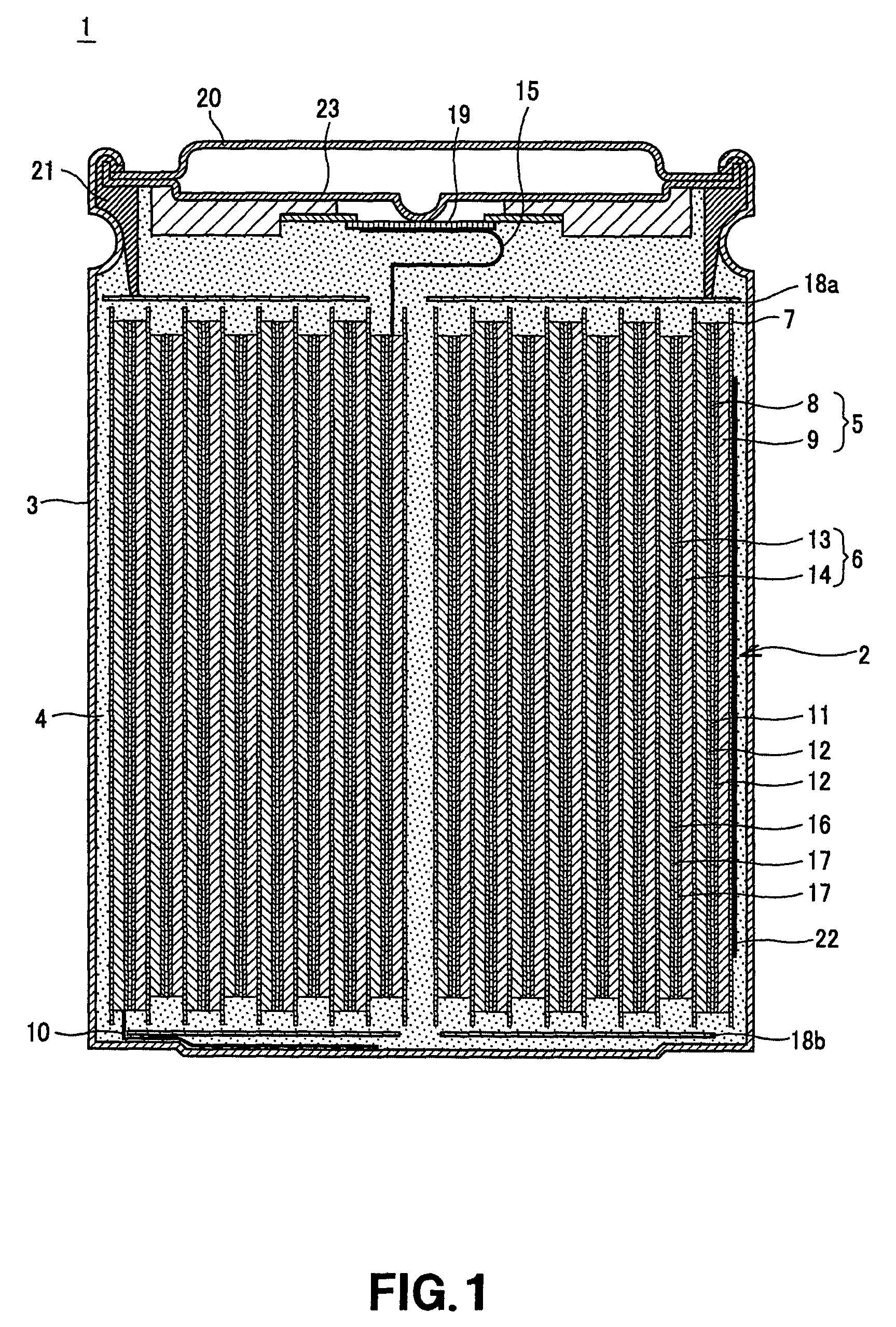Battery
a battery and battery technology, applied in the field of batteries, can solve the problems of lithium precipitation on the anode, inconvenience, lithium precipitation, etc., and achieve the effects of increasing the battery capacity per unit weight, and reducing the weight of the anode substrate or the cathode substra
- Summary
- Abstract
- Description
- Claims
- Application Information
AI Technical Summary
Benefits of technology
Problems solved by technology
Method used
Image
Examples
examples
[0107]The following description is made of practically prepared samples of lithium ion secondary batteries as the batteries embodying the present invention.
Samples 1 to 11
[0108]The samples 1 to 11 were prepared using polymer films, shown in Table 1, as the anode resin films in the anode.
[0109]
TABLE 1true specifictensile strengthelongationtensile elasticitythermal conductivitypolymer typegravity (g / cc)(kgf / mm2)(%)(kgf / mm2)(cal / cm2 · sec · (K · cm−1)−1)sample 1low density0.910.9300258 × 10−4polyethylenesample 2high density0.942.110012012 × 10−4 polyethylenesample 3ultra high0.942.53007014 × 10−4 molecularpolyethylenesample 4polypropylene0.913.23001203 × 10−4sample 5nylon 61.1073002006 × 10−4sample 6polyphenylene1.34733006 × 10−4sulfidesample 7polyester-11.3463002804 × 10−4sample 8polyester-21.397704104 × 10−4sample 9cellulose acetate1.3011.1103004 × 10−4sample 10polyester-31.3432074504 × 10−4(Mylar)sample 11polycarbonate1.2071002005 × 10−4
[0110]The manufacturing method for the lithium...
PUM
| Property | Measurement | Unit |
|---|---|---|
| tensile strength | aaaaa | aaaaa |
| tensile strength | aaaaa | aaaaa |
| tensile strength | aaaaa | aaaaa |
Abstract
Description
Claims
Application Information
 Login to View More
Login to View More - R&D
- Intellectual Property
- Life Sciences
- Materials
- Tech Scout
- Unparalleled Data Quality
- Higher Quality Content
- 60% Fewer Hallucinations
Browse by: Latest US Patents, China's latest patents, Technical Efficacy Thesaurus, Application Domain, Technology Topic, Popular Technical Reports.
© 2025 PatSnap. All rights reserved.Legal|Privacy policy|Modern Slavery Act Transparency Statement|Sitemap|About US| Contact US: help@patsnap.com

